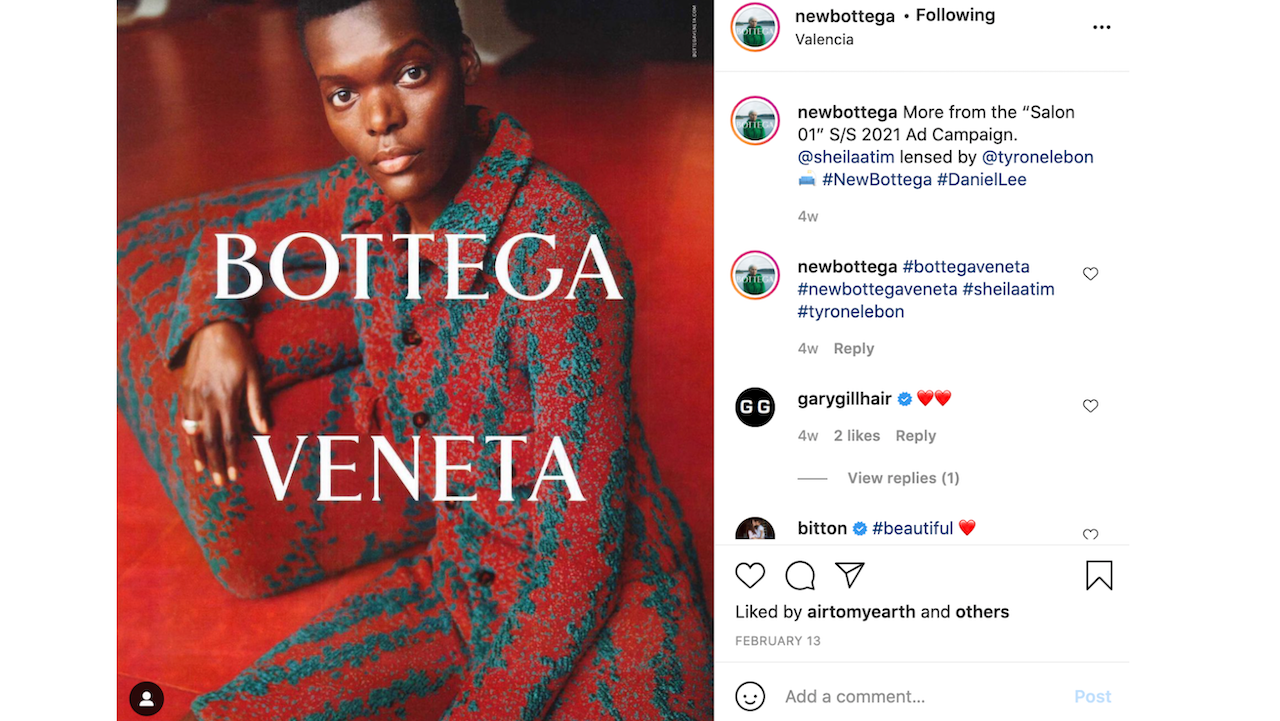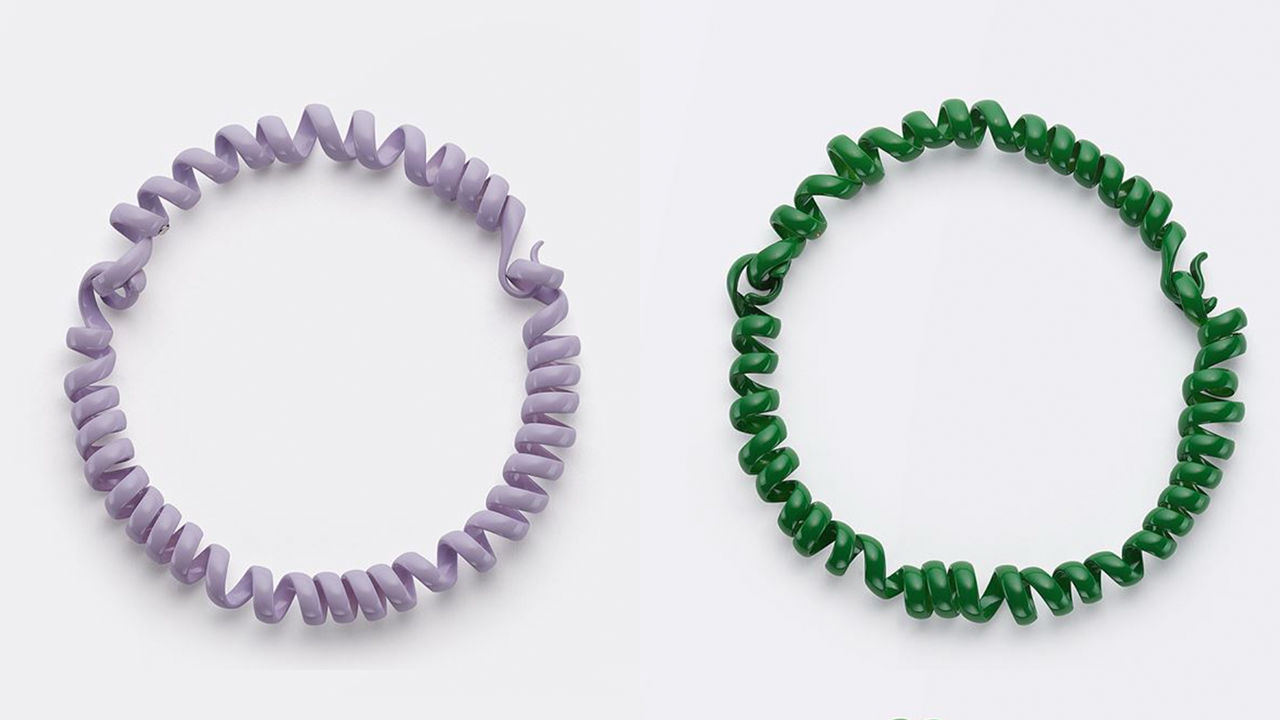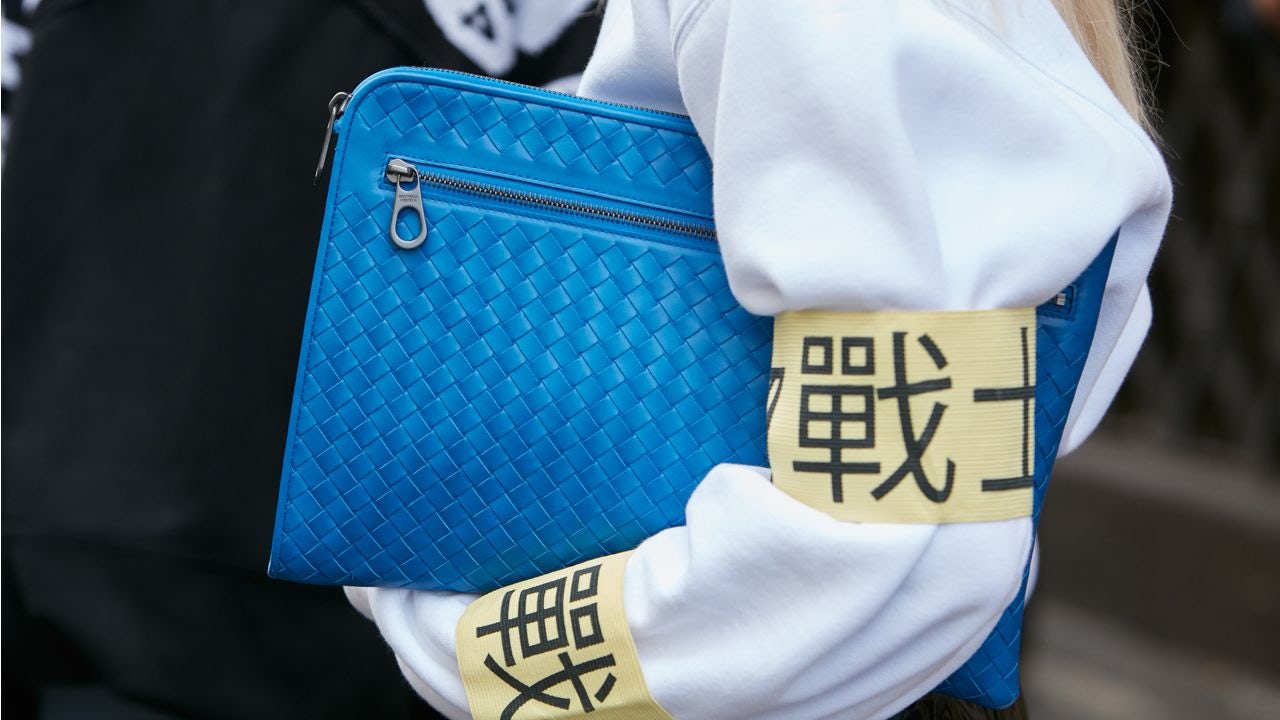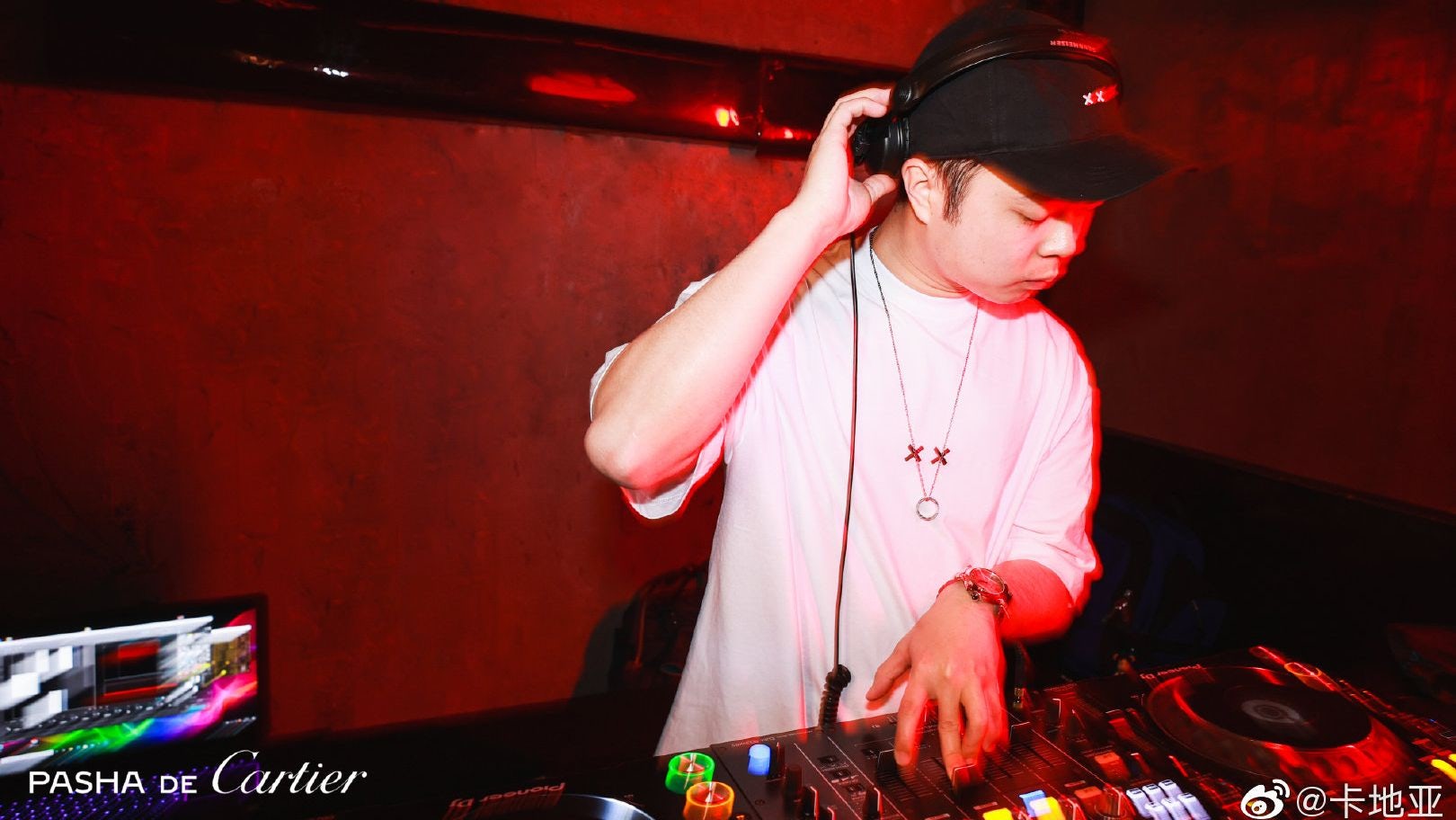Key Takeaways:#
Earlier this year Bottega Veneta moved to quit all social media platforms (except for WeChat in China), yet it still commands attention thanks to the work of influencers and fan accounts.
As luxury brands steer away from exclusivity and strive for inclusivity and accessibility, social media has become the norm for high-end labels to connect with consumers.
By 2025, Gen Z is set to make up 45 percent of global luxury spending, while 31 of Gen Z and 25 percent of millennials say they rely on brand-owned social media accounts to find out about sales and product launches.
Over the past week, the Italian luxury brand Bottega Veneta has been all over Instagram, TikTok, and Twitter, even though it no longer has accounts on any of the popular social media platforms. The Kering-owned label’s floral-beaded necklace and coiled jewelry collection have drawn attention for their playful and simple looks, coupled with typical luxury-level pricing — a genius meme fashion move made for maximum virality that coincides with Bottega Veneta’s sabbatical from social. The brand quit all social media in the West in early January and a month later it took its content off of Weibo in China, maintaining a presence only on Tencent’s WeChat.
Bottega Veneta was the only Kering brand to report growth in 2020, and the results apparently instilled sufficient confidence to make an official exit from social media. But still, the global influencer obsession with Cassette bags and Lido sandals, combined with thriving fan accounts like Instagram-favorite @newbottega, means that we will continue to see the brand in our feeds.
But now a significant portion of the brand’s narrative is being left in the control of influencers, fans, and others. That can offer a reliable stream of marketing activity for a brand in Bottega Veneta’s enviable position, even if it’s not always entirely favorable, as shown by the recent uproar over the new jewelry.

Katie Yackey, an e-commerce analyst at market research firm Mintel, noted another risk of leaving marketing to your fans: “Brands that only rely on others’ posts will miss out from the potential connection to those posts if they don’t have a presence on social,” she said. “If they have to go to a brand’s website and leave the platform, they risk losing potential customers along the way.”
Even if a luxury brand like Bottega Veneta relies solely on brand ambassadors and influencers, the effect wouldn’t be as powerful as with maintaining brand-owned accounts. “I wouldn’t advise it for brands,” said Arnold Ma, founder of China-focused digital marketing agency Qumin. “It's like going back to the traditional advertising days where every time you’re doing a campaign, you’re borrowing reach.”
Additionally, the luxury industry has shifted to be more accessible and inclusive. Some might see Bottega Veneta’s departure from social as embodying the concept that privacy is the ultimate luxury in 2021, but it could prove to be a dated move over the long term.
Alexis DeSalva Kahler, a senior research analyst at Mintel, said that the move could even deter today’s luxury consumer: “Turning off a social media presence can make a brand appear more exclusive, which may pose a problem for luxury brands, especially since many consumers view luxury fashion brands as inaccessible.”
The cultural capital sought by luxury brands is no longer about superior elitism, but is instead about being part of the conversation among online communities and maintaining relevance in an overflowing sea of content.
However, back when Chris Donnelly founded luxury digital marketing agency Verb Brands eight years ago, high-end brands weren’t as enthralled with social media as they are today. “Luxury brands are comfortable with the idea of social media now because it has proven success and it's so ingrained in our lifestyle,” he said.
“The association of luxury and exclusivity is very much in decline, and this trend will only grow,” said Donnelly. “What we’re seeing is that younger consumers are valuing brand experience and brand values, such as sustainability and equal rights, much more.”
And the opinions of young consumers have taken on exponential importance. When Cartier became one of the first luxury names to enter social media when it joined Myspace in 2008, it was inspired by the opportunity to communicate with a younger audience. Today, that remains as a critical motivation behind luxury’s social strategies. After all, by 2025 Gen Z is set to make up 45 percent of global luxury spending.
Mintel’s Yackey highlights that 31 percent of Gen Z and 25 percent of millennials rely on a brand’s social accounts to alert them to sales or product launches, and those are vital statistics for premium labels to tap into.
The rising phenomenon of social commerce can’t be ignored either, especially in China, according to Qumin’s Ma. “There are super high conversion rates from followers to buyers,” he said. “We’re talking a range of between five to ten percent. Social commerce and live commerce are massive for increasing revenue.”
As consumers come of age and spend more, luxury may not be able to ignore the role of social media platforms for long. Mintel luxury research analyst Jocelyn Dong summed it up: “The ultimate goal of luxury brands is to achieve business growth. Achieving business growth means higher exposure, penetration, and conversion rates,”
It’s likely that Bottega Veneta’s social vanishing act is a type of publicity stunt designed more to generate hype than a wholesale dismissal of the key marketing tool. And as more people talk about it (like this article), it proves that it’s working for now.



